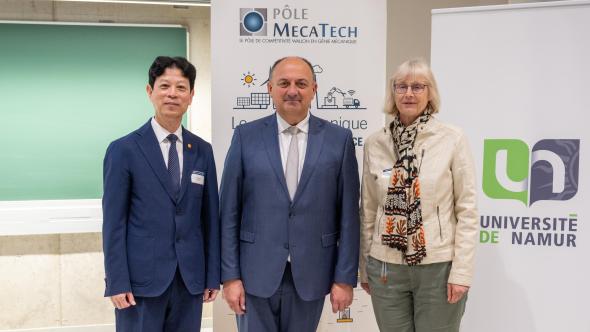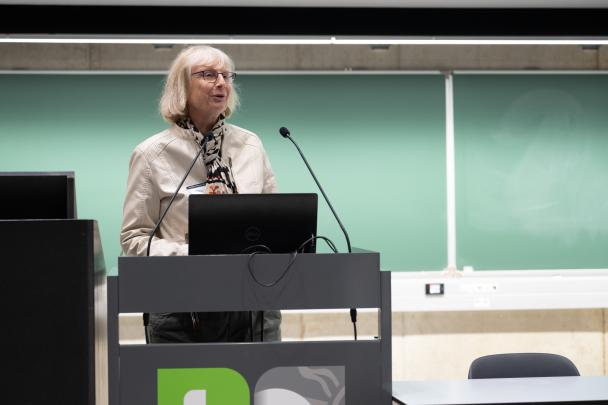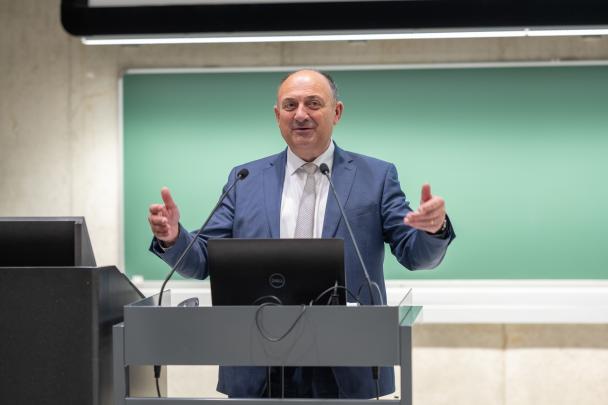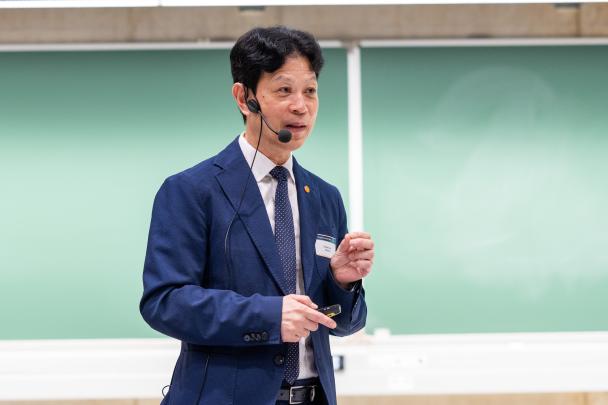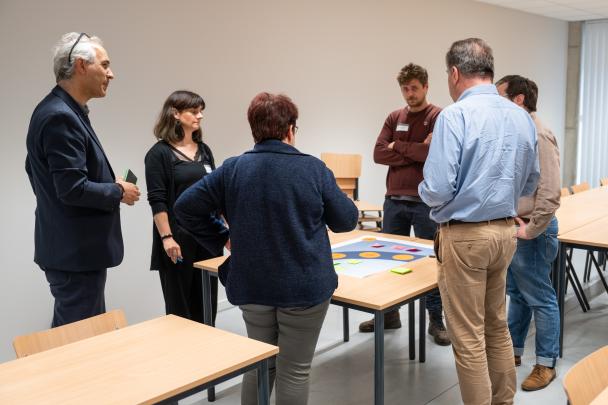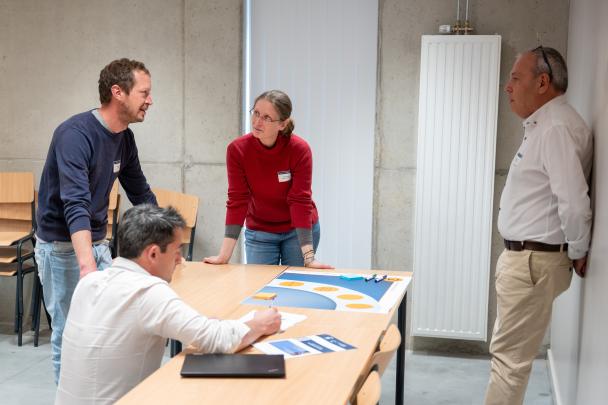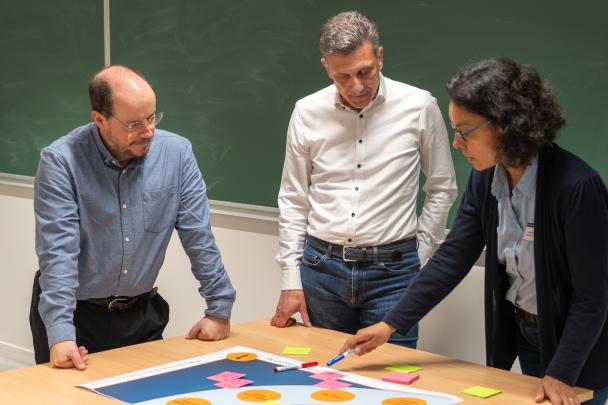Financed to the tune of 11.4 million euros as part of Wallonia's Recovery Plan, BatFactory is being run jointly by UNamur, UMONS, ULiège, UCLouvain, ULB, Materia Nova, CRM, CENAERO, with support from the MecaTech cluster. Carine Michiels, Vice-Rector for Research at UNamur, opened the session, followed by Minister Willy Borsus, in charge of Research in the Walloon Region, who both stressed the importance of this portfolio of projects for the energy transition. The Minister reiterated the importance of research in meeting tomorrow's environmental and societal challenges.
Professor Bao Lian Su, the project portfolio coordinator, then detailed the portfolio's four axes: the production and functionalization of eco-responsible active materials; the semi-industrial manufacture of electrodes, their semi-automatic assembly and instrumentation; the production of battery packs and battery management systems from design to operation; and UNamur's acquisition of in situ solid-state NMR characterization equipment to certify the performance of materials and batteries.
The event, which brought together some 100 people from both academia and industry, continued with a debate moderated by Laetitia Theunis, aimed at comparing research areas with industry expectations and needs, and proposing ideas for related projects. Exchanges continued around four workshops, organized by the Pôle Mécatech around the 4 research axes.
